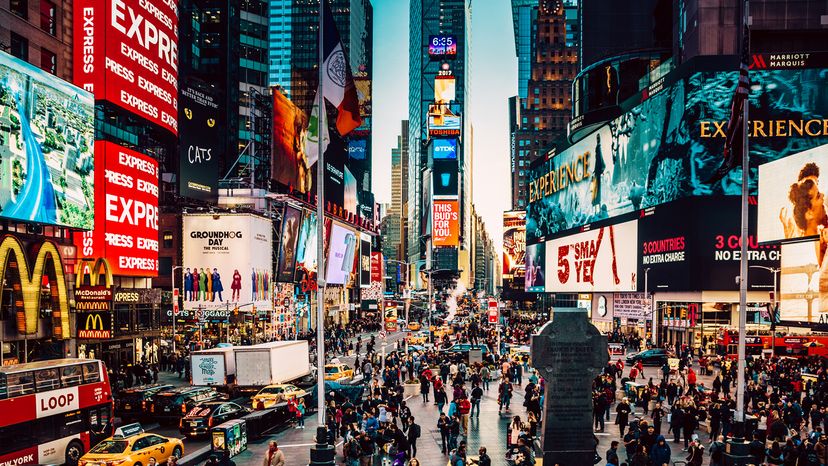As far as population goes, New York City takes the cake by a long shot. With over 8 million residents, NYC has over double the population of the next most populated city in the U.S.: Los Angeles. The Big Apple also has the highest population density, where city residents and tourists alike vie for space.
Largest U.S. cities by population:
- New York, New York (8,258,035)
- Los Angeles, California (3,820,914)
- Chicago, Illinois (2,664,452)
- Houston, Texas (2,314,157)
- Phoenix, Arizona (1,650,070)
- Philadelphia, Pennsylvania (1,550,542)
- San Antonio, Texas (1,495,295)
- San Diego, California (1,388,320)
- Dallas, Texas (1,302,868)
- Jacksonville, Florida (985,843)
While the city of Los Angeles is the second-largest city in the U.S. in terms of population, Los Angeles County is the most populous county in the U.S. with 9.86 million people.
Population Density in the U.S.
Population density is the number of people per unit of a geographical area, typically measured per square mile in the United States. According to World Population Review, the country as a whole has a population density of 93.29 people per square mile. However, population density varies widely from state to state, from less than two people per square mile to nearly 12,000.
High population density is typically associated with metropolitan areas which have historically been centers for driving economic and social development. However, population density can quickly turn into overpopulation, which puts stress on governmental and natural resources, increases pollution, causes traffic and can lead to rising housing costs or housing shortages.
Areas with low population density may offer wide-open spaces and more accessible housing prices but typically have less infrastructure and economic development, for better or worse.
Places in the U.S. With Low Population Density
The state of Alaska has — by far — the lowest population density in the United States, with only 1.3 people per square mile.
Following that, Wyoming, Montana, North Dakota and South Dakota all have low population densities with less than 12 people per square mile. Wyoming is also the smallest state in the U.S.A. in terms of total population size, with a mere 584,057 residents across its high plains.
Places in the U.S. With High Population Density
Shifting from states to cities, New York City has the highest population density in the United States, with over 29,000 people per square mile. Following New York City, San Francisco has the country's second-highest population crowding per capita with nearly 19,000 people per square mile.
Boston, Miami, Chicago and Philadelphia follow behind with the greatest amounts of population compared to land area.
